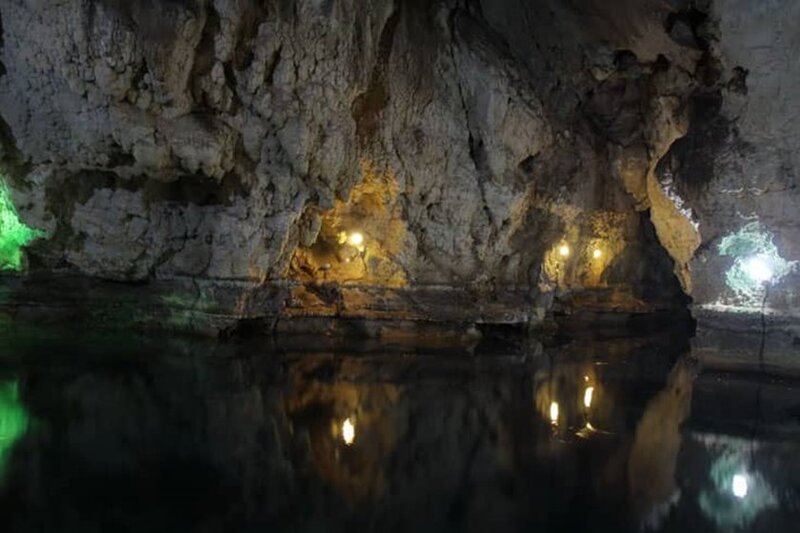Kurdshop – If you want to have a fun trip and find a natural place on your trip, Saholan, the magical cave is the place you want.
Some interesting facts about Saholan, the magical cave:
Saholan is one of the most interesting and unique caves, located in East Kurdistan, Urmia province. This cave is located 43 kilometers southeast of Mahabad and between Mahabad and Bokan.

Saholan Cave is located next to Saholan village; hence it is called Saholan. The name of the cave and the village is a Kurdish name derived from the word "Sahol" (ice). In addition to this, the local people also refer to it as the “Kuna Kotr” of Saholan due to a large number of pigeon nests and the presence of hundreds of pigeons inside the cave. The cave consists of two parts. The part with water is called "Kuna Kotr", and the part without much water and consists of a large hall and a corridor is called the "Kuna Malan".

Caves are an unknown world in the heart of the mountains and on the surface of the earth where people first do not know what amazing beauty lies within them, but just stepping into them is enough. Saholan Cave is one of the unique caves and the second watery cave in Iran that dates back to the Second Cretaceous geological period and is known as one of the tourist attractions in the region. All the gaps and corners of this cave are full of very interesting scenery that impresses the visitors because of their beauty.

One of the most fun things you can do in this cave is boating in the lake inside the cave. One can also see the secrets of the depths of the water at a glance because the lake has clear water that everyone can see to a depth of several meters and clearly know what is under the water. Going from lake to lake, sailing through corridors of Saholan, and listening to the magical sounds in the cave make the memories of one’s visit to this place meaningful and everlasting.
Saholan has two entrances, one with 178 stairs and the other with 107. People enter through one door and exit through the other. One goes to a depth of 30 meters by passing through the stairs. As one approaches deeper into the cave, the air pressure increases, the oxygen decreases, and the humidity reaches 78%. The cave consists of two parts: water and land. The land part consists of several halls and corridors, and the water part consists of three lakes connected by several water corridors and can be navigated by boat.

The average water depth of the lake is 15 meters and the deepest point is 65 meters. The temperature difference between the cave and outside is 10 to 15 degrees Celsius, ranging from 10 to 13 degrees Celsius in summer and winter. The humidity in the cave is between 70 and 80 percent, which has caused the formation of green and brown pots on the rocks inside the cave.
Other information about the features of this unique cave is as follows:
Humans are said to have lived in this cave 1000 years ago.
The area found: about two hectares.
Length of waterway found: 300 meters.
Length of route found: 300 meters.
Size of the main hall: 58 meters to 42 meters.
Ceiling height of the cave: 50 meters.
The animals that live in this cave: Pigeons, bats, and some small creatures that live in the water.
The pigeons that live in the Saholan cave have many nesting holes and have built their nests in different parts of the cave. Because of the darkness and lack of light, algae do not grow in the water and contain only microscopic organisms.

How was the Saholan Cave discovered?
The Saholan cave in East Kurdistan is said to have a history of 70 million years and was first explored a hundred years ago.
The date of the discovery of the cave is unknown, as it was visited by many villagers in the area and the local people regularly used it as a shelter and a place to hunt pigeons. From 1892 to 1896, a French tourist named Jacques Domorgan, with the help of the Saholan villagers, built a boat and entered the cave. Thus, he drew a map of the cave that is 60% close to the current map of the cave. After World War II, a British delegation and in 1996 Iranian researchers continued this work.
The cave, which has been hosting tourists since 2000, is listed on Iran's list of natural and national heritage and is one of the protected areas of the country's environmental agency.









